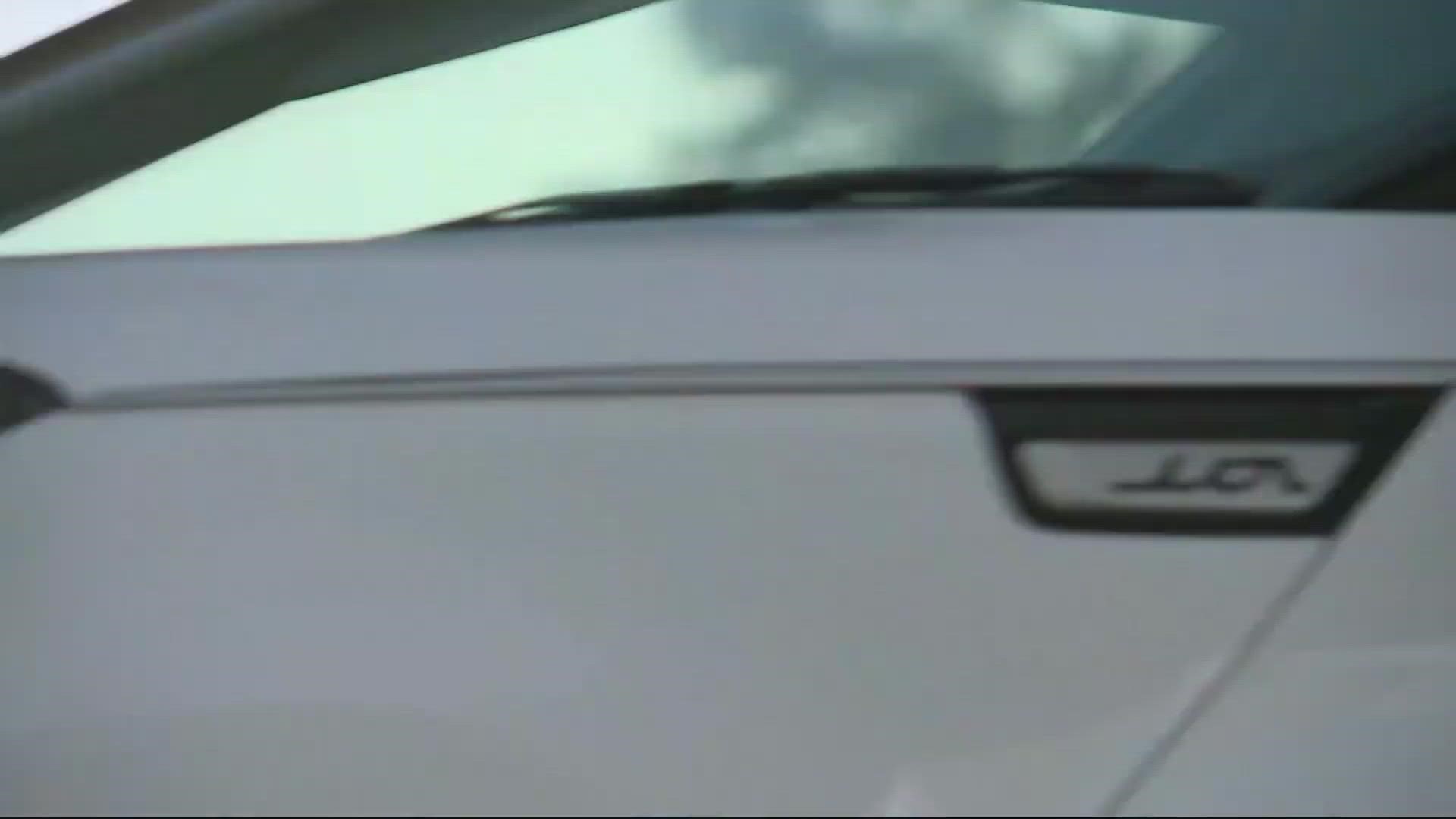ST. JOHNS COUNTY, Fla. — Driving around St. Johns County, you may have noticed mysterious new devices popping up by the roadside that consists of a solar panel and a camera on a black pole.
The camera acts as a license plate reader, automatically scanning the plate of every car that passes.
The technology is a new generation tool that law enforcement says is constantly monitoring local roads, collecting data and helping to solve crimes.
The design of license plate readers in St. Johns County is new, but the technology is not. The St. Johns County Sheriff's Office has used them since 2017 and now says it's their number one crime fighting tool.
The Sheriff's Office references a case where the technology led to a 2019 hit-and-run arrest on Race Track Road in St. Johns County.
"Bonnie rode her bike out everywhere," Bonnie Parry's sister, Brenda Damphouse, said.
On the morning of June 15, 2019, Parry was riding on bikes with a friend on Racetrack Road in St. Johns County. A fairly routine activity for her, according to Damphouse.
“She liked her bike. It was exercise for her," Damphouse said.
But that ride was anything but typical. Both women were hit by a car, neither survived. St. Johns County Sheriff’s Office Captain Ryan Smith says nobody saw the crash happen but drivers going by called 911 when they drove by the scene.
“There are two women on the road who look like they are unconscious, they were on bikes. There is blood all over the place," someone reported to 911 dispatchers.
Investigators had little to go on. Only a few broken car parts and only a vague witness description of a black car.
“They saw a subject standing outside of the vehicle, looking at the people who had been struck and then get in the car and drive away," St. Johns County Sheriff's Office Captain Ryan Smith said.
Despite the vague description, investigators had a secret weapon. License plate readers are what Smith calls the number one tool to catch criminals in St. Johns County.
“I've been in law enforcement about 20 years. And it is the single greatest law enforcement tool I've ever seen," Smith said.
License plate readers scan every vehicle that passes, and instantly begins searching law enforcement databases to determine if the plate is linked to an active warrant, Amber Alert, or stolen vehicle. If so, it immediately alerts law enforcement and officers are dispatched.
“We have cases where we've arrested murder suspects and several different cases outside of Florida, outside of St. Johns County where we've captured them in our county," Smith said.
The readers are part of a vast network of similar devices on Florida highways, interstates, and toll booths. It's a fact that concerns Director of Investigations of the Electronic Frontier Foundation, Dave Maass.
“It is a dragnet that is capturing data on every single driver, regardless of whether you have any connection to a crime. In fact, the large vast majority of license plates that are scanned belong to innocent people. And yet that data is stored," Maass said.
In St. Johns County, Smith says the information is transmitted to law enforcement only if the vehicle is involved in a crime. He adds the license plate readers designed by Flock Safety purge every 30 days.
“I can't take that information and know anything about you, anything about me, it's not connected to your name, your house or anything like that," Smith said, "Public safety is really everything behind it and there's checks behind everything we do. Every search is audited. There's a trail behind it. If anyone was to misuse it, they would be disciplined, potentially arrested. We have never had anyone misuse these cameras or these databases.”
Smith says license plate readers have been a key law enforcement asset.
“We've arrested 107 individuals with arrest warrants, 478 individuals were charged with a crime based on the LPR, 653 felonies and 301 misdemeanor charges were levied against those individuals. We've recovered 72 missing individuals all because of license plate readers," Smith adds.
Deputies say they used the technology to solve the 2019 hit-and-run. Henry Haigler was arrested and charged with leaving the scene of a crash involving death.
"We began to use our databases looking at surveillance camera footage, using our license plate rear cameras and we were to identify five vehicles that fit the description in that timeframe, which would have been the same direction that the vehicle was driving to. We then narrowed that down to one vehicle very quickly, which took us to a potential suspect over in Jacksonville. The case came in at approximately 9:54am. He scanned our LPR is at approximately 9:56am. And we were at his house at approximately 2:23pm. So that's how fast we got this house," Smith explained.
Deputies also obtained surveillance video from the entrance of his neighborhood minutes after the hit-and-run.
“There was a hole in the driver's or the passenger side. I believe the windshield has a complete hole inside of it," Smith said.
Haigler is serving an eight-year prison sentence and Bonnie Parry's sister credits the technology for delivering justice.
“I think that the detectives, the police, they did a very good job. And I think the cameras definitely helped solve the crime," Damphouse said.
The license plate readers are solar-powered and use LTE connectivity. They scan plates 24/7 on various roads across the county.

